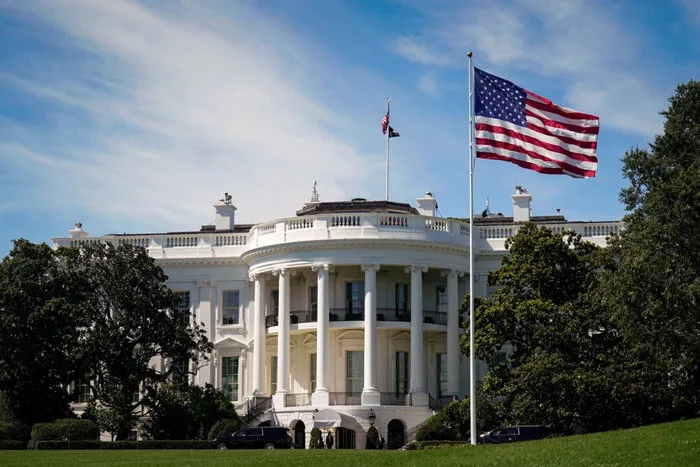By Savanah Hulsey Pointer
The Trump administration has released a list of the private donors contributing funds to the new ballroom being constructed on the White House grounds, which is expected to cost around $300 million.
A plan to build the 90,000-square-foot ballroom was announced on July 31, and construction was officially underway in September.
In the announcement, President Donald Trump said that the project would not use taxpayer funds, and that he and other private donors would bankroll the building.
According to a list provided by the White House to The Epoch Times, donors include Amazon, Apple, Google, Caterpillar Inc., HP Inc., Lockheed Martin, Meta Platforms, Microsoft, Palantir Technologies, and the Union Pacific Railroad.
White House press secretary Karoline Leavitt said at the time the building was announced that for more than 100 years, staff and occupants have “longed for a large event space on the White House complex that can hold substantially more guests than currently allowed.”
A briefing from the administration cited the constraints of the current event facilities at the White House, saying that presidents are “currently unable to host major functions honoring world leaders and other countries without having to install a large and unsightly tent approximately 100 yards away from the main building entrance.”
About $22 million has already been allocated to the construction from the settlement of a 2021 lawsuit Trump brought against YouTube, a subsidiary of Google.
The ballroom will be connected to where the East Wing of the White House currently sits. That wing was constructed in 1902 and then renovated to add a second story in 1942.
More extensive demolition is being done to the East Wing than what was initially anticipated and the president said in comments from the Oval Office on Oct. 22 that “certain areas” of the wing will be left, but that after “a tremendous amount of study with some of the best architects in the world,” it was determined that knocking down a large portion of it would be most advantageous.
The White House began the demolition on Oct. 20, and the White House said on Oct. 21 that it would submit plans to the National Capital Planning Commission at a later date.
Some questions about the jurisdiction over the project have been raised based on provisions of the National Historic Preservation Act of 1966, which can require a review of projects that impact historic buildings.
However, a carve-out for the White House, the U.S. Capitol, and the Supreme Court and their grounds allows the president to move forward with the project.
Leavitt answered questions about the demolition and why no plans have yet been submitted for approval to the National Capital Planning Commission, saying that a “submission is not required legally” for demolition, only for “vertical construction,” and that the administration will make a submission when it is required.
“I would just add, any president can do such things to the White House grounds,“ Leavitt said. ”There have been many presidents in the past who have made their mark on this beautiful White House complex. This briefing room, as you all know, was not once a briefing room; it was a swimming pool.”
The press secretary said that “we’re all grateful” for the modifications made by presidents in the past, adding: “In due time, the East Wing is going to be more beautiful and modern than ever before. And in addition, there will be a big, beautiful ballroom that can hold big parties and state visits for generations to come.”
The remaining currently listed donors to the ballroom are: Altria Group Inc., Booz Allen Hamilton, Coinbase, Comcast Corporation, J. Pepe and Emilia Fanjul, Hard Rock International, Micron Technology, NextEra Energy Inc., Ripple, Reynolds American, T-Mobile, Tether America, Adelson Family Foundation, Stefan E. Brodie, Betty Wold Johnson Foundation, Charles and Marissa Cascarilla, Edward and Shari Glazer, Harold Hamm, Benjamin Leon Jr., The Lutnick Family, The Laura & Isaac Perlmutter Foundation, Stephen A. Schwarzman, Konstantin Sokolov, Kelly Loeffler and Jeff Sprecher, Paolo Tiramani, Cameron Winklevoss, and Tyler Winklevoss.






